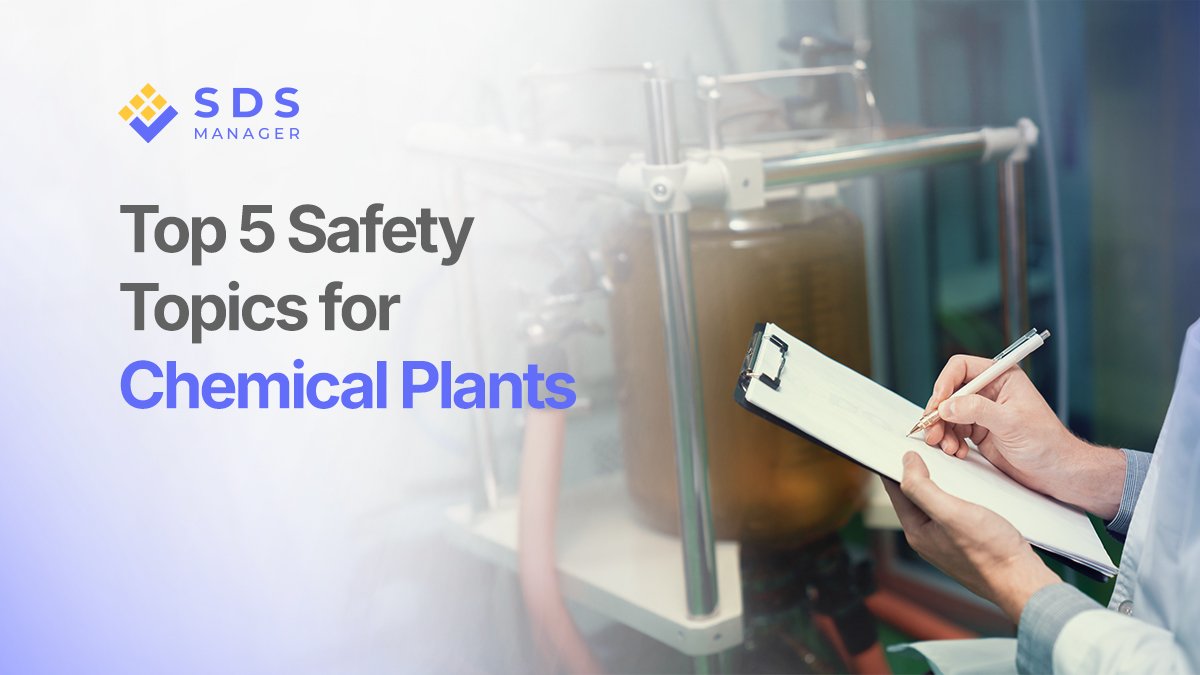

Chemical plants handle hazardous materials, complex equipment, and nonstop operations. To keep people safe and protect the environment, leaders must build a strong and repeatable safety system.
This article explains the top 5 safety topics for chemical plants, with practical steps that any site can adopt.
Know the Regulatory Landscape
Every site should follow the laws and standards that apply to its operations. These often include national laws on occupational safety, environmental protection, process safety, and emergency management, as well as global frameworks such as the Globally Harmonized System (GHS) for classification and labeling.
Many companies also adopt industry standards (for example, risk-based process safety) that set a higher bar than the minimum legal requirement. Clear alignment with chemical plant safety regulations ensures policies, training, and audits stay current and enforceable.
Safety Topics for Chemical Plants
1. Hazard Communication
Clear hazard communication is one of the most important safety practices. Workers must know the risks of the chemicals they handle and how to respond to emergencies. Safety Data Sheets (SDS) are central to this process. They provide critical information on chemical hazards, safe handling, storage, and first-aid measures.
Companies can simplify hazard communication by using a cloud-based SDS management platform, which makes it easier to search, manage, and update SDS records for full compliance.
2. Process Safety Management (PSM) and Risk Assessments
Process safety focuses on preventing accidents involving hazardous chemicals by managing technical systems and human factors. This includes identifying potential risks in production processes, conducting regular equipment inspections, and using preventive maintenance programs.
Compliance with chemical plant safety regulations often requires implementing strong PSM programs that include monitoring systems, incident investigation, and emergency shutdown procedures.
3. Personal Protective Equipment (PPE)
Proper use of PPE helps protect employees from chemical exposure, spills, and airborne contaminants. Common protective gear includes gloves, goggles, respirators, and protective suits. Employers must ensure that PPE is readily available, properly fitted, and maintained.
In addition, training workers on how to correctly wear and dispose of PPE is an essential step in meeting chemical plant safety regulations.
4. Emergency Preparedness and Response
Every chemical plant must have a clear emergency response plan in place. This includes procedures for fires, spills, gas leaks, and explosions. Workers should know evacuation routes, assembly points, and how to use emergency equipment such as fire extinguishers and eyewash stations.
Emergency drills, regular training, and updated response plans ensure that employees are prepared to act quickly and effectively in case of an incident. Digital SDS management platforms can play a vital role in emergencies by providing instant access to chemical safety data.
5. Waste Management and Environmental Safety
Chemical waste poses risks not only to workers but also to the environment. Proper disposal and treatment of hazardous waste is a key regulatory requirement. Plants must separate waste streams, use approved containers, and follow all legal guidelines for safe disposal.
Sustainable waste management practices reduce the environmental footprint of chemical plants and help avoid costly fines for non-compliance.
Conclusion
Strong safety practices protect workers, communities, and the environment while ensuring compliance with chemical plant safety regulations. The five safety topics for chemical plants mentioned in this article form the foundation of safe operations.